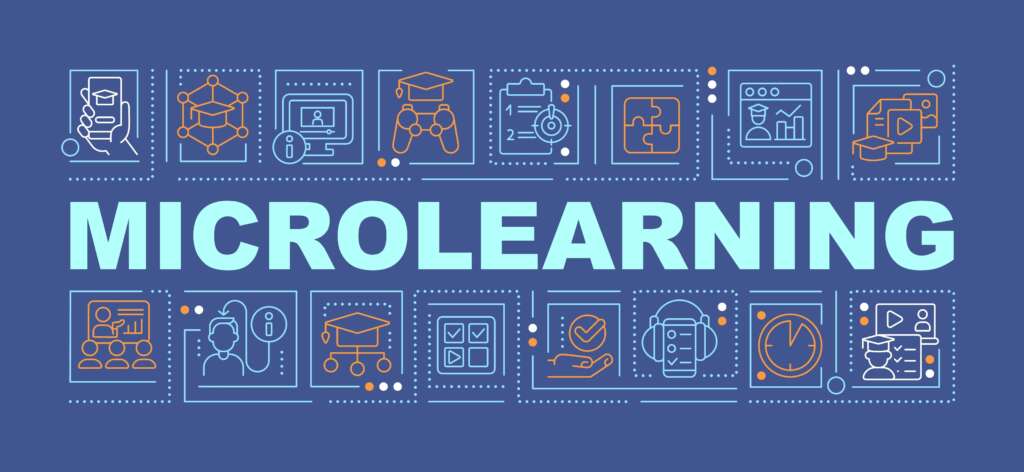In the current hectic world, an emphasis on continuous learning and skill growth cannot be overemphasized. In parallel with industry shifts and technological progress, the value of an individual decreases as he must adapt to remain relevant and competitive. Luckily, with the increased use of short courses and microlearning, individuals can instantly gain new skills in whatever manner they want.
Understanding Microlearning
Microlearning is the process through which information is delivered into short, small, and easily accessible learning parts. Learning is no longer confined to a traditional format of hour-long lectures or semester-long courses, but the content is now abundantly available and broken down into bitesize chunks that are small enough to be comprehended fully but long enough to retain the information for a long time. These formats can be in any form, from videos to tests to audios to interactive prototypes.

Accessibility and Convenience
No doubt, microlearning is one of the most effective approaches due to its convenient and sensitive nature among all existing learning methods. Contrary to the case of traditional instruction, where time dedication is a critical factor, microlearning facilitates learning by means of personalised time investment and self-scheduling. They can do the courses with their mobiles, phones, or tablets, on their commute, in their break time, or even in their spares.
Targeted Learning
Another important feature of microlearning is that it offers the opportunity to provide the participants with customized learning material. Subjects that are unfolded through deep study and up to the issue in comprehensive details are rather replaced with the short courses performed in the form of focused skills or essential concepts. This personalized mode of learning caters to learners’ prompt educational needs and ensures that they assimilate only what is necessary for their domain of learning. It might be learning a new automated tool, developing communication skills, or learning a foreign language, among other topics. In most cases, there is always an available microlearning course for any subject.
Cost-Effectiveness
On top of being friendly in terms of access, microlearning saves some bucks when compared to other traditional methods of education. Numerous e-learning sites offer free or million-dollar low-level courses so as to enable both the financially strong and those with financial constraints to acquire knowledge. To add to that, it is possible for organisations to spend less on providing training for workers since the process is less expensive, so employers can do it without incurring much.
Enhanced Retention
Research proves that microlearning as a training method can result in a significant enhancement of information retention. The brain break is the efficiency of condensing the complex topics into digestible pieces so that one concept at a time is learned, decreasing cognitive overload. Moreover, the inclusion of multimedia elements such as videos, diagrams, and even interactive quizzes creates learning immersion and continuous reinforcement of the taught concepts. Therefore, students will provide a learning environment, the material from short courses will certainly stay in their memory, and this knowledge will be able to be applied to real-life situations.
Meeting the need for different learning approaches
Microlearning has the additional advantage of being able to be customized for different learning types. While some people may like visual content like videos and infographics, others may prefer learning through hands-on activities or auditory cues. Microlearning platforms contain digital goods like pictures, animations, and display chapters in several formats to reach different learning styles. It enables students to have a chance to work on material they resonate with as they effortlessly learn as it is in their learning style.
Continuous Learning Culture
Through microlearning, moreover, a culture of all-time learning formation is enhanced within organizations. Through their encouragement of workers by allowing them to attend short courses and making available learning resources, companies show that their desire is the development of workers and the realisation of this potential. This does not solely mean making employees happy and retaining them, but rather developing a stronger, more skilled group that can adapt to any changes needed by the business.

Conclusion
To sum up, the progression of microlearning has greatly transformed what people get to identify as new skills and knowledge. Under its features of accessibility, convenience, purposes built to specific aims, and cost-effectiveness, microlearning offers a worthwhile choice for schools in their teaching systems. Through micro-learning, individuals can embark on a voyage of continuous learning and skill development along the way and will also be able to take the lead in a world characterised by slow-developing changes. With the aim of potentially improving your career prospects, following your passion, or just the joy of expanding your prowess, the set of short courses is for you today, waiting with excitement in them to help you discover your potential.
